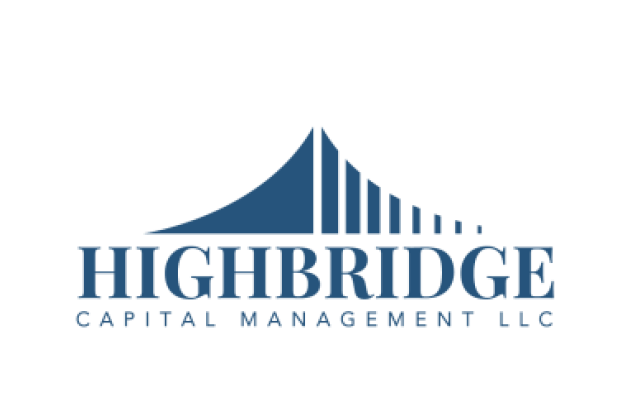Highbridge Multi Strategy edges ahead in 2017 – Highbridge Multi Strategy Fund generated a return of 3.7% on its NAV over the course of 2017. The total return of the S&P 500 in 2017 was +21.8%. This might look like an unexciting return but it is consistent with returns earned by most other absolute return funds.
An extract from the manager’s review follows:
“The sub-strategies within the Underlying Fund that were the largest contributors to performance for the year were Convertible Credit & Capital Structure Arbitrage and Asia Arbitrage. The largest detractor from Underlying Fund performance was Statistical Arbitrage, an area where we have reduced the Underlying Fund’s exposure. Fundamental Equities strategies produced mixed results during the first half of the year but saw a solid second half. We feel that our 2017 results were high quality and represent a decent year for the Underlying Fund’s, however, the absolute return lags where we would like to be. Low correlation among the Underlying Fund’s strategies and depressed market volatility contributed to Underlying Fund-level realized volatility below our target range in 2017. While we will continue to stay disciplined in our positioning, we are targeting higher volatility for the Underlying Fund in 2018.
Fundamental Equities: After a challenging start to 2017, we are pleased with the strategy’s results in the back half of the year and optimistic about its ability to generate returns in 2018. The Consumer portfolio was the biggest sector P&L driver for 2017, generating profit on both the long and short side of the portfolio. Healthcare posted a good year overall on the back of profit in the biotech portfolio. Financials and Real Estate also generated gains for the year, while TMT was largely flat. Finally, after a tough start to the year, the Industrials strategy made a good comeback to end the year down slightly.
Event-Driven Equity: Event-Driven strategies faced a more mixed 2017. Merger Arbitrage posted a decent year overall, but as portfolio deals closed over the first three quarters, we did not find many compelling opportunities to reinvest the capital and therefore absolute risk in the book came down significantly over the course of the year. We believe that deal activity will accelerate post tax reform pending more clarity on the regulatory outlook and resolution in the Time Warner / AT&T antitrust trial. The Equity Capital Markets strategy saw an overall good year driven by a strong first half; however, the strategy ended with a neutral second half of the year as performance of capital markets transactions was more mixed. Event-Focused European Long/Short Equity was largely flat for the year. The portfolio generated good alpha; however, its extremely conservative positioning and both position-level and portfolio-level hedging dampened results. Event-Focused North American Long/Short Equity detracted.
Quantitative Equity: Statistical Arbitrage was the Underlying Fund’s largest detractor in 2017. Our exposure to the strategy evolved significantly over the course of the year as its allocation was reduced by close to 60%. Entering 2018, the lion’s share of the strategy’s exposure is in the US equities book, which generated positive performance during the back half of 2017.
Capital Structure Arbitrage and Fundamental Credit: Together, Convertible Credit & Capital Structure Arbitrage and Distressed Credit, allocations run by the same investment team, were the largest contributor to 2017 performance. We continue to have high conviction in these strategies and have increased capital to both. These two allocations are the primary source of the Underlying Fund’s credit exposure and cover a fairly diverse US/Europe credit business across high yield, convertible credit and distressed credit. We continue to see compelling investment opportunities for this strategy in an environment where broad risk market opportunity in liquid credit has been largely non-existent. In addition to finding good places to invest capital, our team has also done a great job realizing profits through the ability to capitalize on event catalysts and corporate actions. Asia Arbitrage had a strong 2017, with results through much of the year driven largely by Japanese derivatives and equities. The equity portfolio not only made good earnings revision calls, but also benefited from factor exposure to growth and momentum. In derivatives, volatility trading delivered strong results and profited in Q4 on short correlation and volatility versus variance trades set up during the brief volatility spike in the wake of North Korea fears over the summer. Cross Asset Relative Value was flat in 2017 in an environment in which low volatility and a lack of mean reversion of overall relationships between credits and equities made it challenging to generate profits. The prospect of higher volatility in 2018 is encouraging, and the lack of mean reversion in 2017 means that there are many relationships that look dislocated.
Convertible & Volatility Arbitrage: Volatility-linked strategies such as Convertible & Volatility Arbitrage tend to see a more interesting opportunity set in higher volatility environments as they typically generate profit via positioning that generally leans long volatility. While the strategy was largely flat in 2017, it did a good job of adjusting to historically low volatility markets and limiting losses and negative carry given the headwinds. In the fourth quarter, we added a new Derivatives Relative Value strategy, which invests in opportunities in derivatives instruments across asset classes and utilizes a combination of fundamental work and quantitative analysis to make investment decisions. We expect the strategy to trade a combination of correlation, macro and other relative value trades expressed through exotic structures that limit cost.
Macro: Fundamental Macro was flat for the year as macro markets ended 2017 with high levels of optimism despite significant geopolitical uncertainties and, in the strategy’s view, questionable valuations, particularly in volatility and US equities. The strategy was biased to fade this optimism, which compromised performance. We expect to take a more tactical approach to developing events in 2018 and believe the potential for pockets of instability and volatility across several markets could be a dominant theme during this coming year.”
HMSF : Highbridge Multi Strategy edges ahead in 2017
